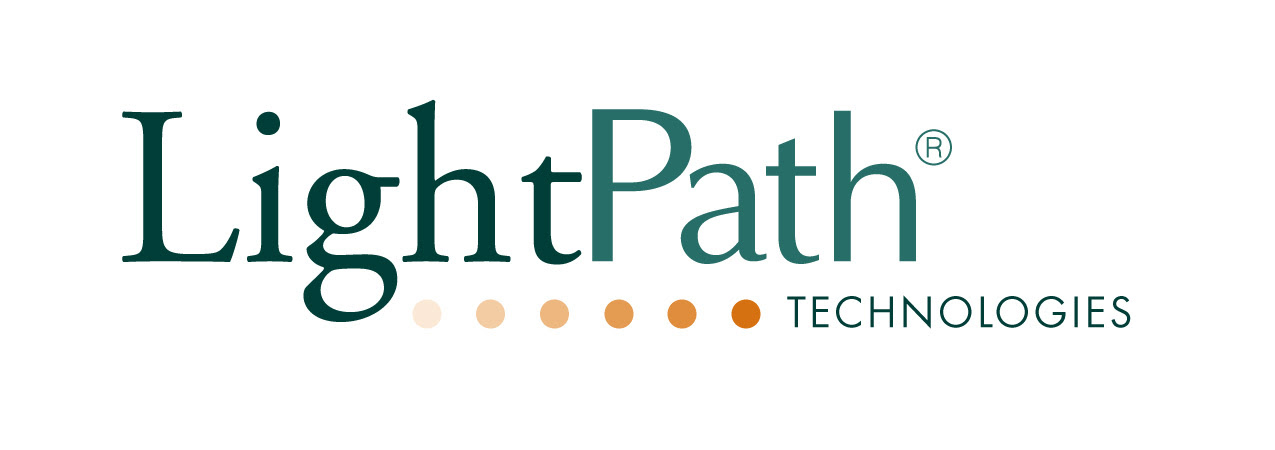| |||
|
Friday, March 31, 2017
LPTH Press Release: LightPath Technologies LightPath Technologies Introduces Chalcogenide Glass Productio
Saturday, March 11, 2017
LightPath Technologies to Exhibit At the Upcoming SPIE Defense and Commercial Sensing Event
| |||
|
Tuesday, March 7, 2017
Seminar: "A few surprises in multiple scattering of light" by Rémi Carminati, 3.23.17/12:00PM-1:00PM/CREOL RM 103
Seminar: "A few surprises in multiple scattering of light" by Rémi Carminati
Thursday, March 23, 2017 12:00 PM to 1:00 PM
CREOL Room 103
CREOL Room 103
Abstract:
Light scattering and transport in disordered media has been extensively studied. On the fundamental side, the possibility to study coherent scattering (speckles) in optics has been an essential tool in mesoscopic physics. On the applied side, methods and techniques have been developed for sensing and imaging in complex media. New trends have emerged recently with the possibility to control light propagation using disordered materials.
In this talk we will review recent results in the theory of light transport (diffusion) and scattering (speckles) that predict unexpected behaviors of interest for the control of light matter--interaction.
We will discuss an invariance property of the average path length in a wave diffusion process [1], and the first measurement demonstrating this invariance [2].
In the study of speckle patterns, we will show that a spatial correlation between the reflected and transmitted intensities persists even in the multiple scattering regime [3]. This makes possible to quantify the level of information on a transmitted speckle that can be deduced from a measurement of the reflected part only. We will finally address the influence of correlations in the disorder on the scattering strength. In the case of hyperuniform materials (a specific class of correlated materials), we will show that disordered materials that are both dense and transparent can be designed [4].
I am indebted to O. Leseur, N. Fayard, A. Goetschy and R. Pierrat with whom most of this work was done.
In this talk we will review recent results in the theory of light transport (diffusion) and scattering (speckles) that predict unexpected behaviors of interest for the control of light matter--interaction.
We will discuss an invariance property of the average path length in a wave diffusion process [1], and the first measurement demonstrating this invariance [2].
In the study of speckle patterns, we will show that a spatial correlation between the reflected and transmitted intensities persists even in the multiple scattering regime [3]. This makes possible to quantify the level of information on a transmitted speckle that can be deduced from a measurement of the reflected part only. We will finally address the influence of correlations in the disorder on the scattering strength. In the case of hyperuniform materials (a specific class of correlated materials), we will show that disordered materials that are both dense and transparent can be designed [4].
I am indebted to O. Leseur, N. Fayard, A. Goetschy and R. Pierrat with whom most of this work was done.
Biography:
Rémi Carminati received is PhD in Optical Physics in 1996 from Ecole Centrale Paris (advisor Prof. J.J. Greffet). In 1996-1997 he was a post-doctoral fellow at the Institute of Material Science of Madrid (Spain) in the group of Prof. M. Nieto-Vesperinas. From 1997 to 2007, he was an associate professor (1997-2003) and a professor (2003-2007) at Ecole Centrale Paris (France). Since 2007, he has been a Professor of Physics at ESPCI Paris. His research activity is carried out at the Langevin Institute (http://www.institut-langevin.
For additional information:
Aristide Dogariu
CREOL Distinguished Seminar: "Time Reversal and Holography with Time Transformations" by Mathias Fink, 3.16.17/4:40PM-5:30PM/CREOL RM 103
CREOL Distinguished Seminar: "Time Reversal and Holography with Time Transformations" by Mathias Fink
Thursday, March 16, 2017 4:30 PM to 5:30 PM
HEC Room 125
HEC Room 125
Mathias FinkLangevin Institute
Abstract :
Because time and space play a similar role in wave propagation, wave control can be achieved or by manipulating spatial boundaries or by manipulating time boundaries. Here we emphasize the role of time boundaries manipulation. We show that sudden changes of the medium properties generate instant wave sources that emerge instantaneously from the entire wavefield and can be used to control wavefield and to revisit the holographic principles and the way to create time-reversed waves. Experimental demonstrations of this approach with water waves will be presented and the extension of this concept to acoustic and electromagnetic waves will be discussed. More sophisticated time manipulations can also be studied in order to extend the concept of photonic crystals and wave localization in the time domain.
Biography:
Mathias Fink is a professor of physics at the Ecole Superieure de Physique et de Chimie Industrielles de la Ville de Paris (ESPCI ParisTech), Paris, France. In 1990 he founded the Laboratory Ondes et Acoustique at ESPCI that became in 2009 the Langevin Institute. In 2002, he was elected at the French Academy of Engineering, in 2003 at the French Academy of Science and in 2008 at the College de France on the Chair of Technological Innovation. He has received several scientific awards as the CNRS medal of innovation, the Rayleigh Award of the IEEE Ultrasonics Society (2012), the ERC SYNERGY Grant (European Research Council) for the HELMHOLTZ project (2013) and the Edwin H. Land Medal of the Optical Society of America (OSA), 2014
Mathias Fink’s area of research is concerned with the propagation of waves in complex media and the development of numerous instruments based on this basic research. His current research interests include time-reversal in physics, wave control in complex media, super-resolution, metamaterials, multiwave imaging, and telecommunications. He has developed different techniques in medical imaging (ultrafast ultrasonic imaging, transient elastography, supersonic shear imaging). He holds more than 70 patents, and he has published more than 400 peer reviewed papers and book chapters. 6 start-up companies with more than 300 employees have been created from his research (Echosens, Sensitive Object, Supersonic Imagine, Time Reversal Communications, CardiaWave and GreenerWave).
For additional information:
Aristide Dogariu
Subscribe to:
Comments (Atom)



